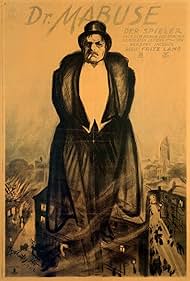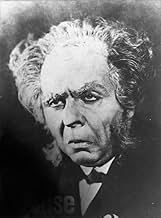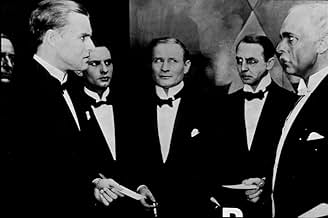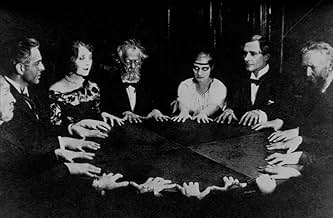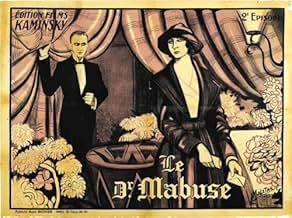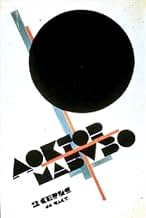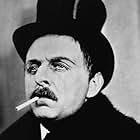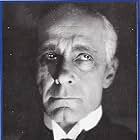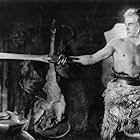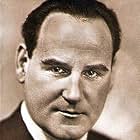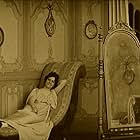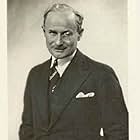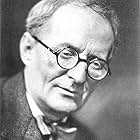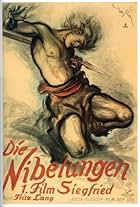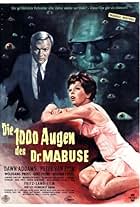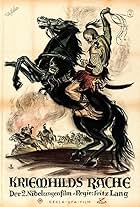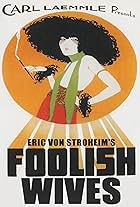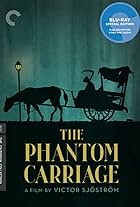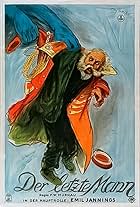IMDb RATING
7.8/10
9.4K
YOUR RATING
Arch-criminal Dr. Mabuse sets out to make a fortune and run Berlin. Detective Wenk sets out to stop him.Arch-criminal Dr. Mabuse sets out to make a fortune and run Berlin. Detective Wenk sets out to stop him.Arch-criminal Dr. Mabuse sets out to make a fortune and run Berlin. Detective Wenk sets out to stop him.
- Awards
- 1 nomination
Rudolf Klein-Rogge
- Dr. Mabuse
- (as Rudolf Klein Rogge)
Gertrude Welcker
- Countess Dusy Told
- (as Gertrude Welker)
Hans Adalbert Schlettow
- Georg, the Chauffeur
- (as Hans Adalbert von Schlettow)
Károly Huszár
- Hawasch
- (as Karl Huszar)
Julius E. Herrmann
- Emil Schramm
- (as Julius Herrmann)
Anita Berber
- Taenzerin im Frack
- (uncredited)
Paul Biensfeldt
- Mann, der die Pistole bekommt
- (uncredited)
- …
- Director
- Writers
- All cast & crew
- Production, box office & more at IMDbPro
Storyline
Did you know
- TriviaSoviet editors re-cut the Dr. Mabuse films into one shorter film (see Alternate Versions). The lead editor was Sergei Eisenstein.
- GoofsThe sign at the Excelsior about languages spoken declares "Her talces svenska" ("Her" and "talces" are pure nonsense). It should read "Här talas svenska" ("Swedish spoken here").
- Quotes
Cara Carozza, the dancer: You gamble with money, with people and with fate and most horrifying of all, with your own self.
- Alternate versionsIn 1995 it was released in Spain on a silent films collection on video. There was a reduced version of 88 minutes retitled "The Fatal Passion". Originally distributed by "The Interstellar Film Company".
- ConnectionsEdited into Histoire(s) du cinéma: Fatale beauté (1994)
Featured review
1922 Germany was in political turmoil and spiralling into a hyperinflation crisis. Meanwhile in cinema the German Expressionist movement was coming of age with the release of FW Murnau's Nosferatu and this, the first in Fritz Lang's series of epics Dr Mabuse, der Spieler. While perhaps not as classically expressionist as Murnau or Robert Wiene, Fritz Lang arguably put his finger on the mood of times better than any other. With Mabuse, his unique style develops to convey a picture of the chaos of the era.
The opening sequences of Dr Mabuse are evidence of screenwriter Thea von Harbou's growing strength as a storyteller and Lang's economy of expression. The first shot a close-up of Mabuse's hand, holding cards showing his various disguises presents and defines the title character. A frantic, rapidly cut action scene then hooks the viewer, whilst introducing us to Mabuse's network of minions. After that, we see Mabuse's elaborate scam at the stock market. In one particularly striking image, the crowd of traders panic and jostle, whilst Mabuse stands calmly on a pedestal above them a perfect metaphor for his position of power amidst social chaos.
At one point in his youth Lang trained as an architect, and this fact is central to his style as a director. There are hints of this in his earliest films, but in Mabuse the architectural touch is fully matured. Throughout, the set design and décor is almost more important than the actors. Whereas other expressionists would evoke mood most frequently through use of light and shadow, Lang does it primarily through use of space. He composes shots in straight lines and geometric patterns, occasionally seeming to form eyes or faces. Often characters are dwarfed by the sheer cavernous size of the rooms they are in. Also look at how many scenes take place on a stage or lecture hall, and how Lang contrasts opposing shots of speaker (or performer) and audience a metaphor for master and masses. He even has Mabuse sitting at his desk facing the camera, as if to make the real-life viewers his audience a touch Lang used a fair bit throughout his work.
A frequent complaint about Dr Mabuse is its gargantuan length and I have to admit it does drag in places. Lang's following silent features, although also very long were extremely tight in structure and worked like a classical symphony in the way different parts complemented each other. Dr Mabuse is not quite up to that standard yet. While some of the individual acts are well-balanced little dramas in themselves, as a whole it is a little uneven. Mabuse also suffers from wordy title cards and a lack of convincing action sequences again, problems that Lang would have solved by the time of Metropolis. It's worth remembering though that on its original release parts one and two were shown on consecutive nights, and it's much easier to digest this way. I wouldn't recommend any first-time viewer try to tackle the whole thing in one sitting.
Holding the whole thing together is a mesmerising performance from Rudolph Klein-Rogge in the title role. While acting in Hollywood was becoming increasingly naturalistic at this time, Germany was a little way behind and performances still tended to be a bit too theatrical and exaggerated. Lang however softens the impact of melodramatic acting by never letting the characters get too realistic in the first place. Cinema was like a comic-book for Lang, in his urban thrillers as much as in his exotic adventures, and this approach saves Dr Mabuse from becoming too strained and ridiculous.
Although it's not as polished as any of his later silents, Dr Mabuse was perhaps Lang's most influential film. The idea of revealing the identity and methods of the villain to the audience was no doubt a forerunner of Hitchcock's mode of building suspense. A young Sergei Eisenstein was given the task of cutting a shortened version of Mabuse for the Russian public, and the way Lang imbues each shot with meaning may have contributed to the concept of intellectual montage. This is not to mention the impact of the Mabuse character on generations of cinematic villains to come. Dr Mabuse, der Spieler is a far from perfect film, and can be tough to watch although it's not as dull as some would claim, and it's certainly a key film in several strands of cinematic development.
The opening sequences of Dr Mabuse are evidence of screenwriter Thea von Harbou's growing strength as a storyteller and Lang's economy of expression. The first shot a close-up of Mabuse's hand, holding cards showing his various disguises presents and defines the title character. A frantic, rapidly cut action scene then hooks the viewer, whilst introducing us to Mabuse's network of minions. After that, we see Mabuse's elaborate scam at the stock market. In one particularly striking image, the crowd of traders panic and jostle, whilst Mabuse stands calmly on a pedestal above them a perfect metaphor for his position of power amidst social chaos.
At one point in his youth Lang trained as an architect, and this fact is central to his style as a director. There are hints of this in his earliest films, but in Mabuse the architectural touch is fully matured. Throughout, the set design and décor is almost more important than the actors. Whereas other expressionists would evoke mood most frequently through use of light and shadow, Lang does it primarily through use of space. He composes shots in straight lines and geometric patterns, occasionally seeming to form eyes or faces. Often characters are dwarfed by the sheer cavernous size of the rooms they are in. Also look at how many scenes take place on a stage or lecture hall, and how Lang contrasts opposing shots of speaker (or performer) and audience a metaphor for master and masses. He even has Mabuse sitting at his desk facing the camera, as if to make the real-life viewers his audience a touch Lang used a fair bit throughout his work.
A frequent complaint about Dr Mabuse is its gargantuan length and I have to admit it does drag in places. Lang's following silent features, although also very long were extremely tight in structure and worked like a classical symphony in the way different parts complemented each other. Dr Mabuse is not quite up to that standard yet. While some of the individual acts are well-balanced little dramas in themselves, as a whole it is a little uneven. Mabuse also suffers from wordy title cards and a lack of convincing action sequences again, problems that Lang would have solved by the time of Metropolis. It's worth remembering though that on its original release parts one and two were shown on consecutive nights, and it's much easier to digest this way. I wouldn't recommend any first-time viewer try to tackle the whole thing in one sitting.
Holding the whole thing together is a mesmerising performance from Rudolph Klein-Rogge in the title role. While acting in Hollywood was becoming increasingly naturalistic at this time, Germany was a little way behind and performances still tended to be a bit too theatrical and exaggerated. Lang however softens the impact of melodramatic acting by never letting the characters get too realistic in the first place. Cinema was like a comic-book for Lang, in his urban thrillers as much as in his exotic adventures, and this approach saves Dr Mabuse from becoming too strained and ridiculous.
Although it's not as polished as any of his later silents, Dr Mabuse was perhaps Lang's most influential film. The idea of revealing the identity and methods of the villain to the audience was no doubt a forerunner of Hitchcock's mode of building suspense. A young Sergei Eisenstein was given the task of cutting a shortened version of Mabuse for the Russian public, and the way Lang imbues each shot with meaning may have contributed to the concept of intellectual montage. This is not to mention the impact of the Mabuse character on generations of cinematic villains to come. Dr Mabuse, der Spieler is a far from perfect film, and can be tough to watch although it's not as dull as some would claim, and it's certainly a key film in several strands of cinematic development.
Details
- Release date
- Country of origin
- Languages
- Also known as
- Dr. Mabuse, the Gambler part one: The Great Gamble
- Filming locations
- Production company
- See more company credits at IMDbPro
- Runtime4 hours 2 minutes
- Color
- Sound mix
- Aspect ratio
- 1.33 : 1
Contribute to this page
Suggest an edit or add missing content

Top Gap
By what name was Dr. Mabuse, the Gambler (1922) officially released in India in English?
Answer